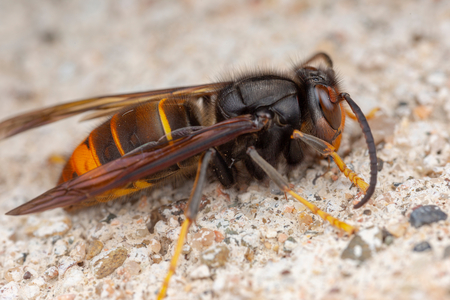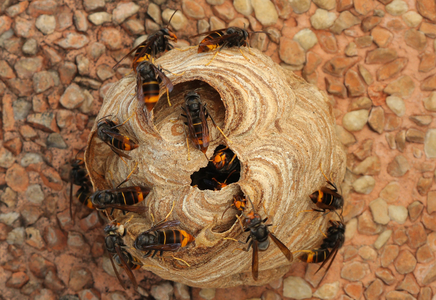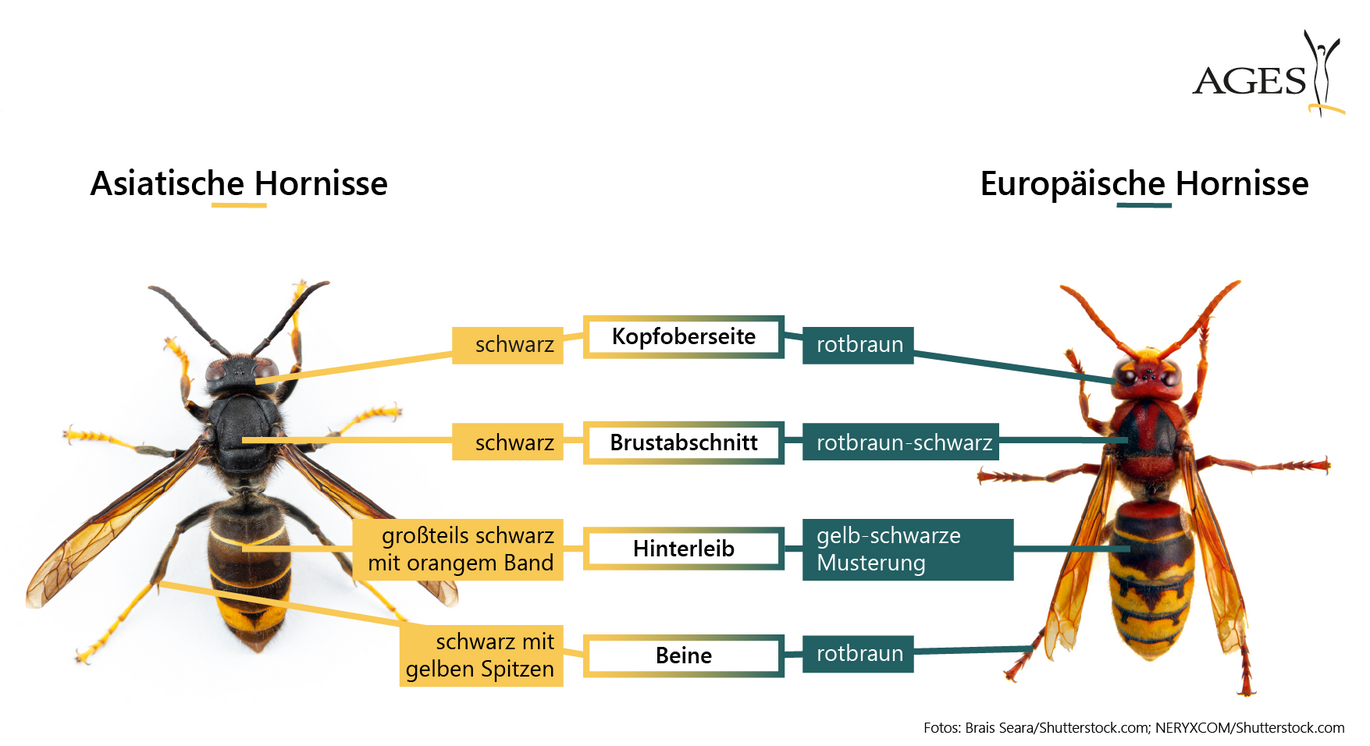Asian hornet
Occurrence
Since 2015, it has been known to occur in large parts of France, Portugal, Spain, Italy and Germany. In 2016, it reached the Channel Islands and Great Britain. In 2017, a reproductive queen was sighted in Switzerland (canton of Jura). In 2023, the Asian hornet was observed in Hungary near the Austrian border. The Hungarian Museum of Natural History examined two of the specimens found in Kimle and confirmed that they were the Asian hornet Vespa velutina. A distribution is considered possible for the whole of Europe as far as southern Scandinavia.
Situation in Austria
On 9 April 2024, a specimen was sighted and caught for the first time in Austria in the city of Salzburg. According to current estimates, this is an isolated find due to the time of year, presumably of a queen without an established nest.
Due to the current situation, we ask Austrian beekeepers to pay increased attention in the vicinity of their bee colonies. Based on experience in other countries, we recommend the following procedure: observe the flight of bees in front of the colonies for about 20 minutes during your regular visits to the apiary in the coming weeks - this period should be sufficient to recognise the possible presence of the Asian hornet. If you suspect the presence of the Asian hornet, please document the situation (photo, film) and report the suspicion to the responsible authorities. The Federal Office for Food Safety (import control) and the nine provincial governments are responsible for invasive species. Further information can be found here.
Imkerhof Salzburg has set up its own hotline for reporting sightings of the Asian hornet: +43 (0)664/99025539
Please do not catch or kill any animals, as confusion with native species is possible.
In the download area you will find information material to help with identification.
Specialist information
Vespa velutina is of particular interest to beekeepers as it prefers to hunt social hymenoptera (bees, wasps, flies), spiders and grasshoppers to feed its brood. The question of how much damage it can cause to bee colonies is judged differently. Vespa velutina is diurnal and hunts its prey in flight. In front of the beehives, it lies in wait for the returning bees in hovering flight. High densities of Asian hornets can weaken colonies and even lead to colony losses. According to one estimate, in late autumn, when the strength of other insect populations declines, about 75 bees are preyed upon per day.
They are characterised by nests (40 to 60 cm in diameter with a side exit) in tall trees. The hornet colony consists of an average of 6,000 individuals, with only the queens overwintering.
The Asian hornet is just as harmless to healthy people as the native hornet, Vespa cabro (allergic reactions are possible). Both species behave peacefully and normally only attack humans when threatened. Their noisy flight is particularly unsettling.
Contact
Leitung
DI Hemma Köglberger
- hemma.koeglberger@ages.at
- +43 50 555-33127
-
Spargelfeldstraße 191
1220 Wien
Last updated: 14.05.2025
automatically translated


